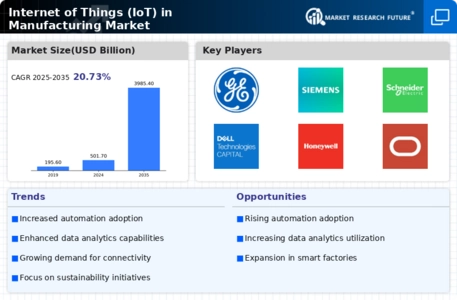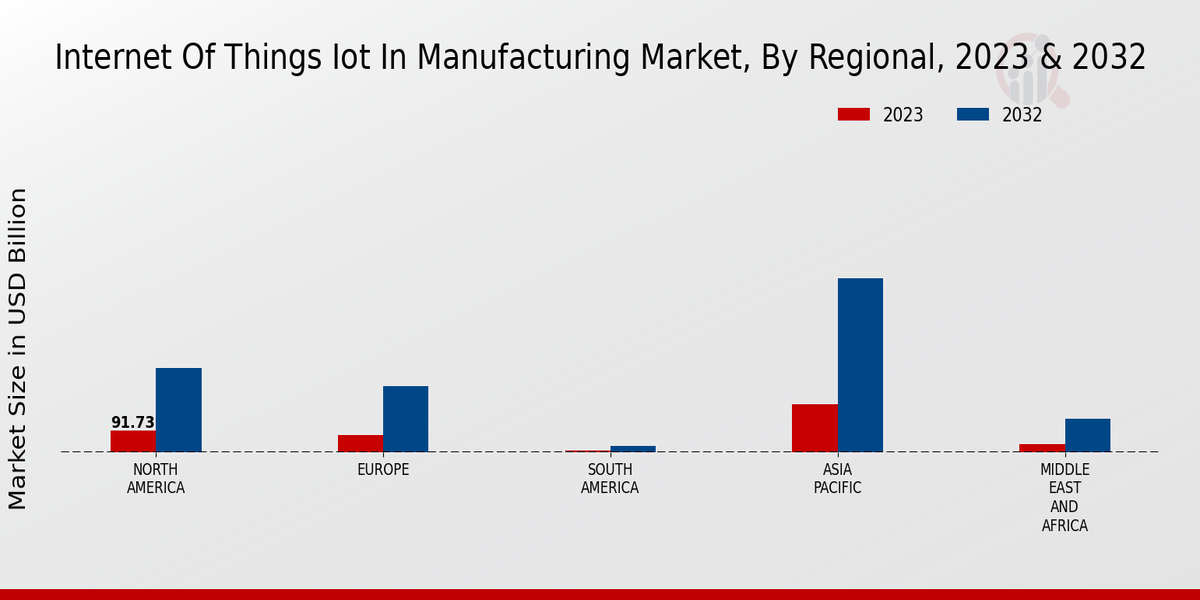Focus on Predictive Maintenance
The Internet of Things (IoT) in Manufacturing Market is increasingly focusing on predictive maintenance strategies. By leveraging IoT sensors and analytics, manufacturers can predict equipment failures before they occur, thereby minimizing unplanned downtime. Data shows that predictive maintenance can reduce maintenance costs by up to 25%. This proactive approach not only extends the lifespan of machinery but also enhances overall productivity. As manufacturers recognize the financial benefits of predictive maintenance, the adoption of IoT solutions is expected to rise, leading to more efficient operations and improved asset management. This trend underscores the critical role of IoT in modern manufacturing environments.
Enhanced Supply Chain Management
The Internet of Things (IoT) in Manufacturing Market is significantly transforming supply chain management. IoT technologies facilitate real-time tracking of inventory and shipments, allowing manufacturers to respond swiftly to market demands. Data indicates that companies utilizing IoT for supply chain management experience a 15% reduction in logistics costs. This capability not only enhances visibility across the supply chain but also improves collaboration among stakeholders. As manufacturers increasingly adopt IoT solutions, they can anticipate disruptions, optimize inventory levels, and ensure timely delivery of products, which is crucial for maintaining customer satisfaction and loyalty in a competitive landscape.
Increased Operational Efficiency
The Internet of Things (IoT) in Manufacturing Market is witnessing a surge in demand for solutions that enhance operational efficiency. By integrating IoT devices, manufacturers can monitor equipment performance in real-time, leading to reduced downtime and optimized production processes. According to recent data, companies that have adopted IoT technologies report a 20% increase in operational efficiency. This trend is driven by the need for manufacturers to remain competitive in a rapidly evolving market, where efficiency directly correlates with profitability. As IoT solutions become more sophisticated, they enable manufacturers to streamline workflows, reduce waste, and improve overall productivity, thereby solidifying their position in the market.
Integration of Advanced Analytics
The Internet of Things (IoT) in Manufacturing Market is experiencing a notable integration of advanced analytics into manufacturing processes. By harnessing data generated from IoT devices, manufacturers can gain valuable insights into production efficiency and quality control. Studies indicate that companies utilizing advanced analytics in conjunction with IoT technologies can achieve a 20% improvement in product quality. This integration allows for real-time monitoring and analysis, enabling manufacturers to make informed decisions that enhance operational performance. As the demand for data-driven insights grows, the role of IoT in facilitating advanced analytics becomes increasingly vital, positioning manufacturers to thrive in a competitive market.
Adoption of Smart Manufacturing Practices
The Internet of Things (IoT) in Manufacturing Market is increasingly characterized by the adoption of smart manufacturing practices. This paradigm shift involves the use of interconnected devices and systems that communicate and analyze data to improve production processes. Research suggests that smart manufacturing can lead to a 30% reduction in production costs. As manufacturers embrace IoT technologies, they are able to implement automation and data-driven decision-making, which enhances flexibility and responsiveness to market changes. This trend is indicative of a broader movement towards Industry 4.0, where the integration of IoT is seen as essential for achieving competitive advantage and operational excellence.


















Leave a Comment